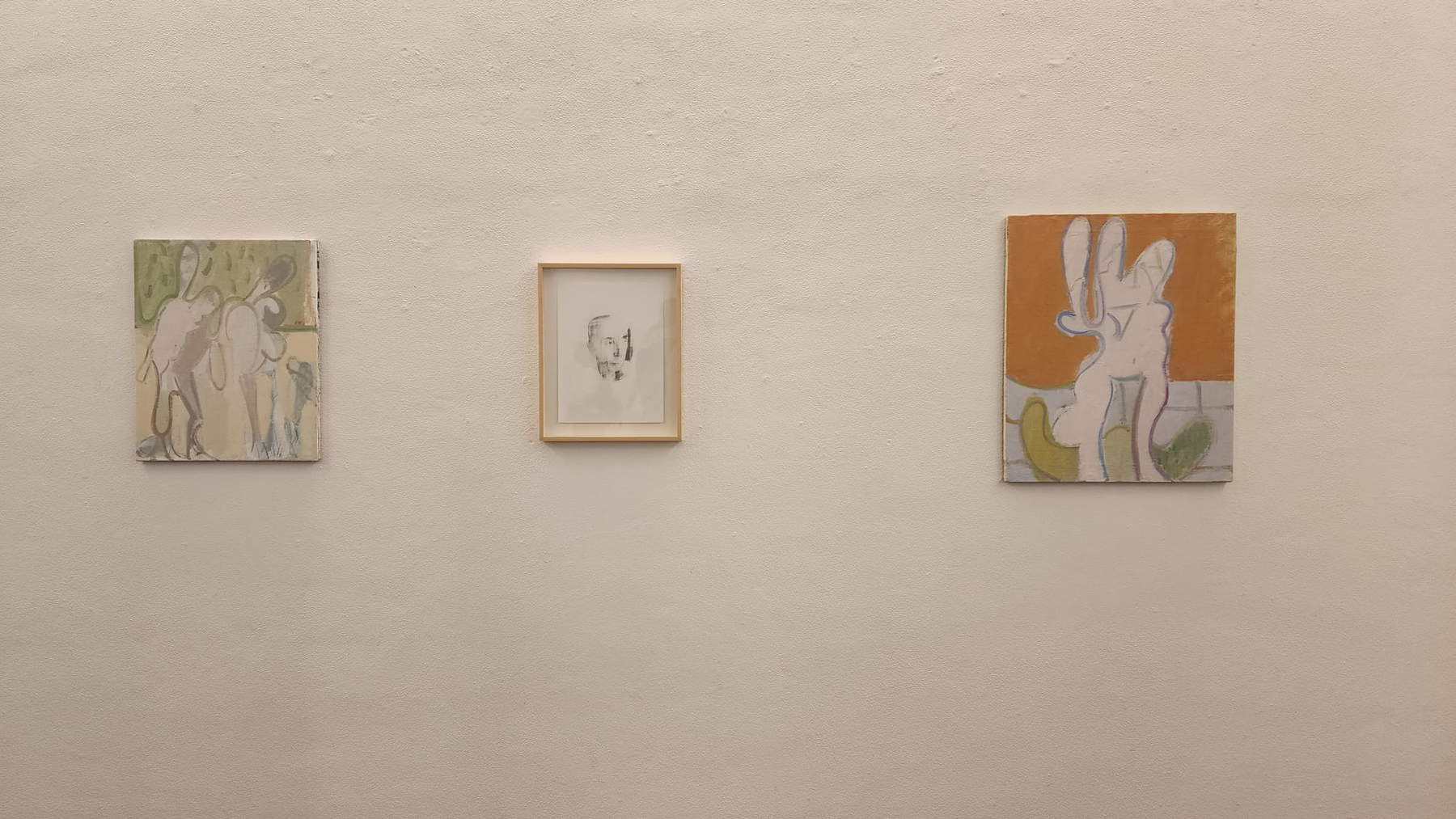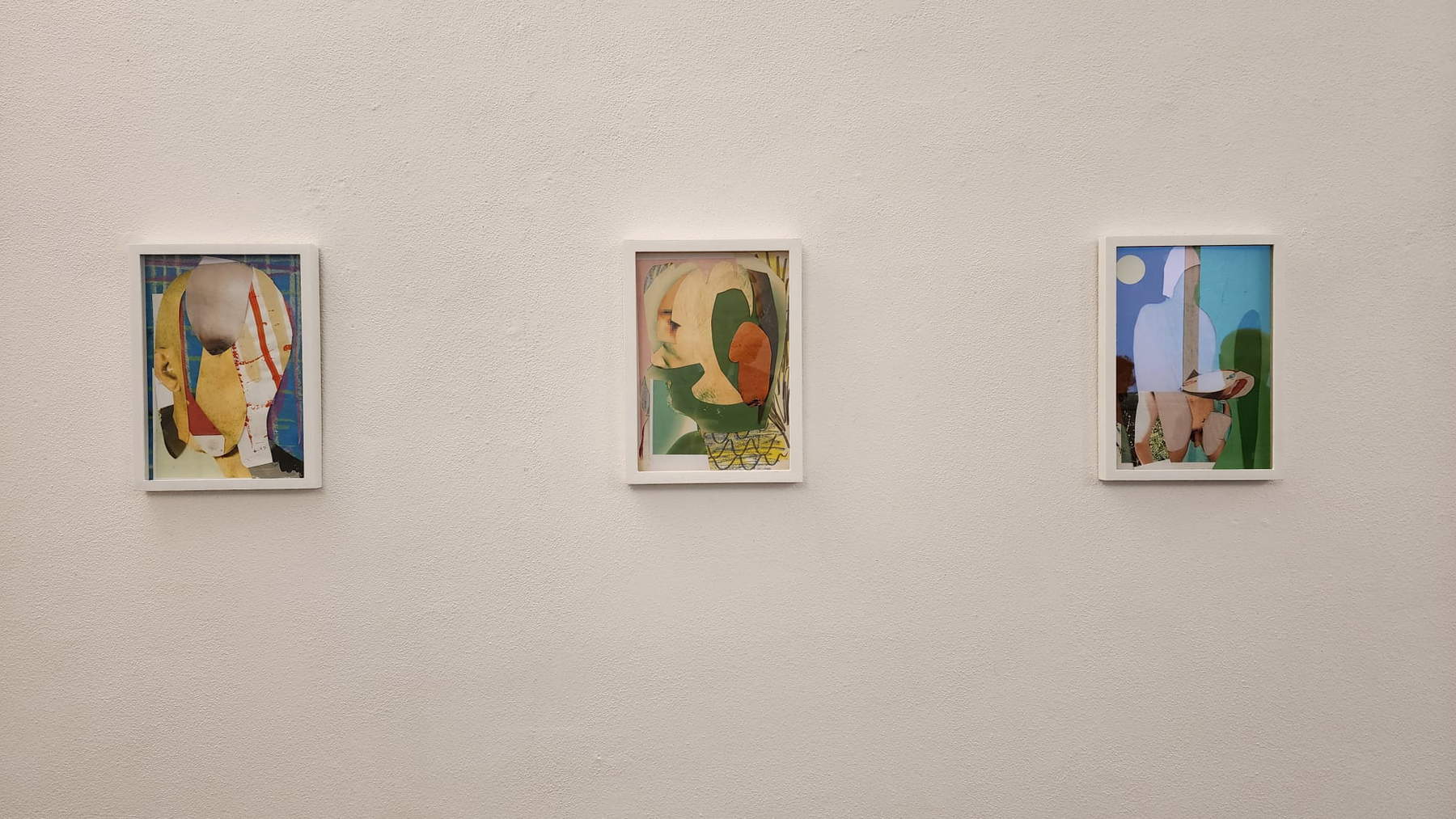On view at the Cardelli & Fontana artecontemporanea gallery in Sarzana is Cesare Biratoni’s exhibition Cartamodello, which runs through July 27. The exhibition explores the latest products of Biratoni’s artistic practice, which weaves painting, cutout and drawing into a profound reflection on form and the very idea of order. At the center of his creative process is chaos: a chaos that is not disorder for its own sake, but a necessary condition for relationships, tensions, and discoveries to emerge. In this inner and visual landscape, figures-bathers, painters, nudes-take on a conceptual rather than narrative role. They are names, rather than subjects, around which the tension between intuition and construction is organized.
Cesare Biratoni’s formative matrix is rooted in adolescence and the discovery of art through direct and solitary experiences. In particular, the influence of Masolino da Panicale’s frescoes in the collegiate church of Castiglione Olona - often visited by bicycle during his high school art school years - has remained vivid in his visual memory and in his way of conceiving the work. At that time, in the 1980s, the pictorial cycles had not yet been restored and the interior of the baptistery lacked artificial light. The artist recounts how the local priest, offering him coffee and the keys, allowed him to stay for hours immersed in that space, observing the colors and shapes in a changing, never direct light.
It was there that Biratoni absorbed a muted palette of pinks and greens, smoothed by time and dimness. Colors that, as he himself says, “gradually penetrated my eyes and my head.” But it is not just a matter of color. Masolino also conveyed to him an idea of formal simplification, an attention to detail - such as the necks of the figures or the shaved napes, also the subject of Roberto Longhi’s analyses - that recalls the very act of cutting out, of synthesizing reality into form.



In Biratoni’s work, the act of cutting out takes on a central significance, both as a technical gesture and as a conceptual strategy. When he paints, draws or composes, he has the feeling that he is always chasing the same thing: a formal essence that is never fully grasped. The idea of an evolutionary process, of a romantic tension toward an ultimate goal, puzzles him. Similarly, the conception of a work as a collection of fragments, which is reassembled a posteriori, also does not fully convince him.
According to Biratoni, the real crux is the impossibility-perhaps typical of contemporary man-of enclosing a self-sufficient form that justifies itself. His subjects, therefore, are not figures in the traditional sense, but symbolic footholds, historical coordinates that allow him to curb chaos and create “conditions” in which something can happen. Chaos, as he tells in the dialogue with Irene Biolchini and Alessandro Roma that accompanies the exhibition, is not an obstacle, but a strategy. It is the starting language to bring the image to life.
In Biratoni’s work, the apparent disorder of his studio becomes an open system, an environment where different elements can clash and dialogue. Chaos generates possibilities, suggests combinations. And the work comes into being the moment these fragments find a minimal order within a figure: a head, two figures in the landscape, a seated painter who is not painting. These are simple images that allow the system to temporarily close, without ever stiffening.
It is in this precarious balance between randomness and construction, intuition and discipline, that Biratoni’s Cartamodello is located. The title of the exhibition suggests a sartorial reference: a pattern to be cut out, a hypothesis of form that can be replicated, adapted, twisted. But it also suggests something fragile, provisional, unfinished. A project that confronts the impossibility of arriving at a definitive form, and that precisely in this tension finds its strength.
Cesare Biratoni, born in Barcelona in 1969, lives and works in Busto Arsizio, in the province of Varese. His career has been built outside the canonical routes of Italian contemporary art, following personal paths and a deeply reflective attitude. His work, while rooted in a figurative dimension, moves on an unstable ridge, where painting is intertwined with theory, memory, irony and doubt.
 |
| Cesare Biratoni and his "Paper Pattern": an exhibition reflecting on chaos and form |
Warning: the translation into English of the original Italian article was created using automatic tools. We undertake to review all articles, but we do not guarantee the total absence of inaccuracies in the translation due to the program. You can find the original by clicking on the ITA button. If you find any mistake,please contact us.